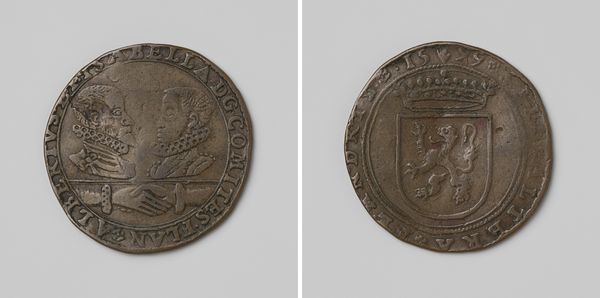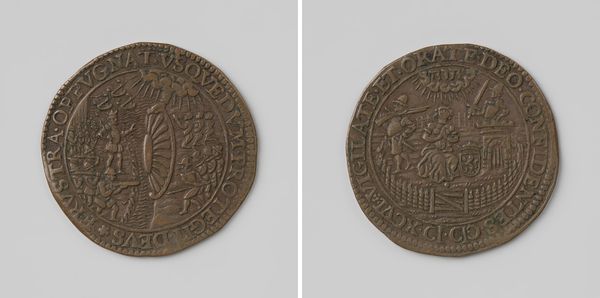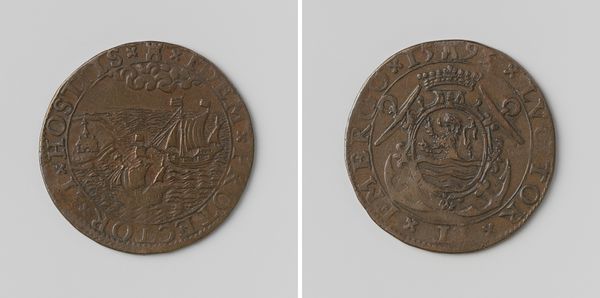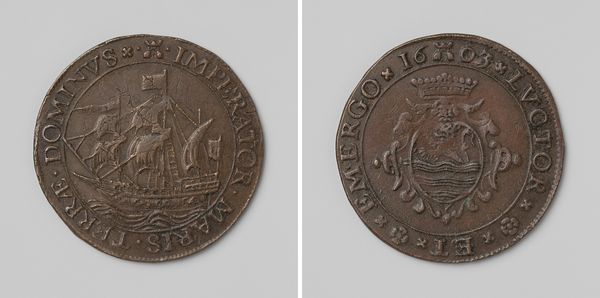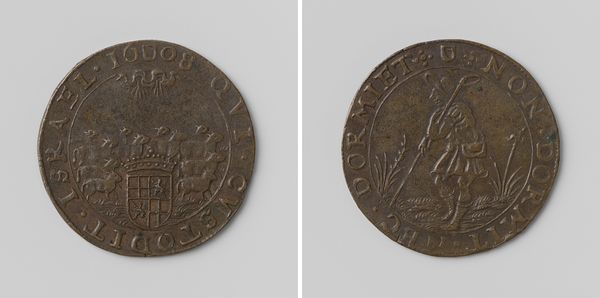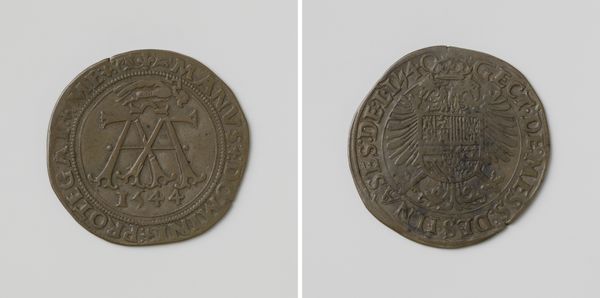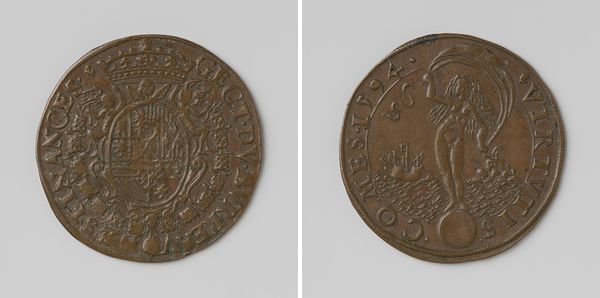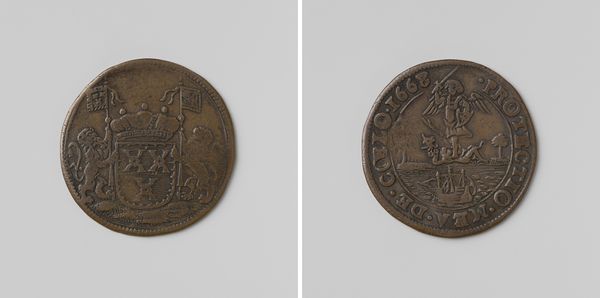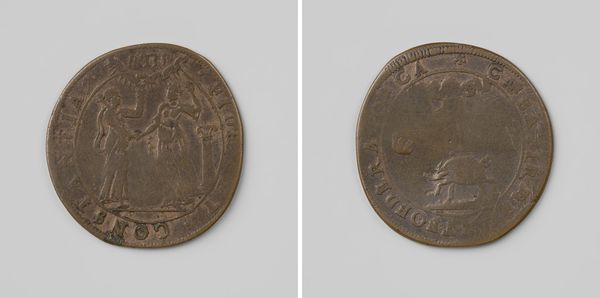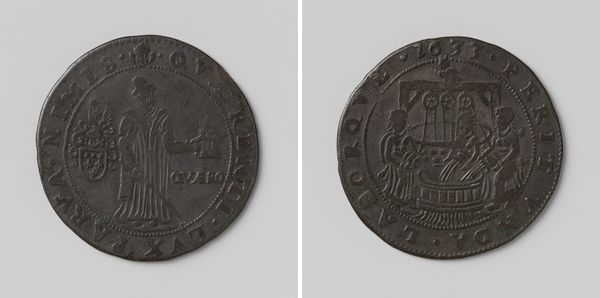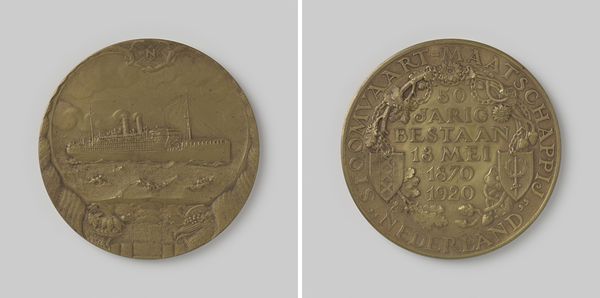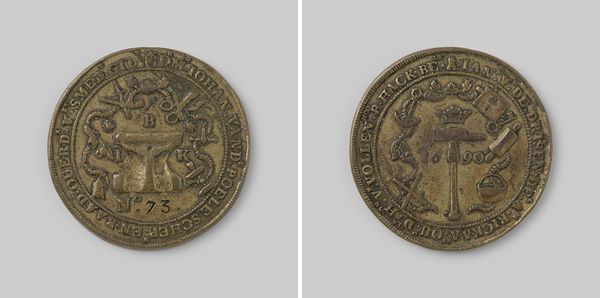
Storten van de koninklijke belasting op molens in de schatkist van de stad Brussel, rekenpenning van Jean Vander Tommen, magistraat van de schatkist van Brussel 1650 - 1651
print, metal
medal
baroque
metal
history-painting
Dimensions: diameter 3 cm, weight 6.12 gr
Copyright: Rijks Museum: Open Domain
Curator: This unassuming medal, dating from 1650-1651, commemorates the payment of royal taxes on mills into the treasury of Brussels, with Jean Vander Tommen, a magistrate, named in connection to this act. What catches your eye about it? Editor: The stark imagery, almost brutalist despite its Baroque era association, intrigues me—windmill, water wheel, the crest, everything feels grounded, almost heavy, in its materiality. Is this the nature of tax? Curator: Perhaps! Consider its construction: made of metal, a very earthly substance. We are seeing here a tangible object representing abstract financial transactions and systems. Each side communicates meaning, yet both point towards systems of production. One side, as you note, pictures mills, instruments of industry. Editor: And the other with heraldry, signifying authority. There's an undeniable contrast, isn't there, between labor and the rewards from labor concentrated into the coffers? Is that cross an explicit endorsement? Curator: This medal served as a receipt, evidencing a transaction that moved material—grain ground at mills—into money. Look closely; the inscription circles the depictions; words forming a direct claim around image and action. Jean Vander Tommen and others produced coins. They likely benefitted. What statement do you suppose this made for those working in those mills at the time? Editor: Well, viewing from that historical distance and social standpoint adds complexity; I considered simply the stark visual of the images, overlooking class structure. We're invited, however subtly, to contemplate production, and, inevitably, the social strata linked inextricably to that labour. Even metal takes on a far heavier tone here when the labour to extract and the control to produce converge within. Curator: Indeed. Analyzing these intrinsic connections between imagery and socio-historical circumstance provides us an entry point. Editor: Thank you for directing my focus, in particular, toward a nuanced examination of those involved during production.
Comments
No comments
Be the first to comment and join the conversation on the ultimate creative platform.
